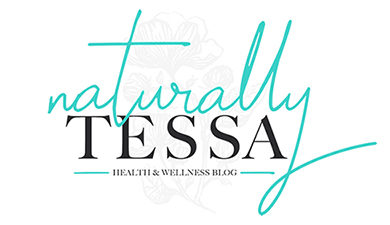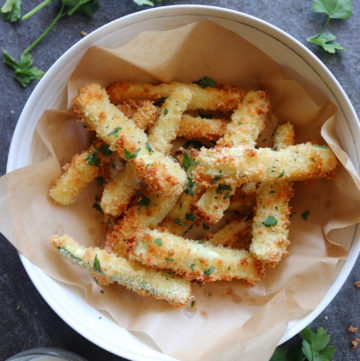Kosher, sea, and pink Himalayan salt are some of the most common varieties. What exactly are the differences between them? Is one healthier than the others?

Let’s explore the most common types and their nutritional properties.
How Do They Differ?
Salts are differentiated by the following:
- How they are processed
- Taste and texture
- Content of minerals or added chemicals
- Where they are sourced (seawater, rock salt)

Table Salt
Table salt is the most common form available. It is heavily processed. It’s made of 97-99% Sodium Chloride (NaCl), iodine, and an anti-caking agent (additive). Anti-caking agents help prevent the salt from clumping.
When it is labeled “iodized” this means it contains iodine, which is essential for thyroid function. However, there are other natural sources to obtain iodine in your diet such as seaweed.
Kosher Salt
Kosher salt is the choice made by many chefs for cooking. The name comes from its purpose: koshering. It has more flavor and a larger crystal. These features make it great to season poultry, meat, and fish.
Kosher salt is the most highly processed type and does not contain iodine or other trace minerals. It’s made of the same components as table salt without the added iodine. It sometimes contains an anti-caking chemical.
Due to the larger crystal size of kosher salt, it contains less sodium per teaspoon than table salt. So if you’re using this type in a recipe that calls for table salt, you’ll need more than the recipe calls for. For example, a baking recipe that calls for 1 teaspooon of table salt will need 2 teaspoons of kosher salt to reach the same salinity.
The reason for this is that kosher salt crystals are hollow. There is more air per teaspoon of kosher salt than table salt.
Sea Salt
Sea salt is evaporated seawater. It is a common alternative to table salt and is less processed. Many assume that it contains less sodium, but it has the same amount of sodium by weight.
Sea salt does have an advantage in the health department. It contains trace minerals, which are essential minerals that the human body must get from food in small amounts. You can get zinc, iron, phosphorus, copper, and silicon by seasoning your meals. (1)

Pink Himalayan Salt
Pink Himalayan salt has been the latest trend. It’s said to have more health benefits than other salts. However, more quality research needs to be done to confirm these reports. One benefit to this pink beauty is that it does not contain any additives or harmful artificial ingredients.
Despite its name, this type is not exactly from the Himalayan mountains. It comes from a region near the Himalayan range in the Punjab region of India. Thousands of years ago, the region was covered in seawater. Today, just the salt rocks are left and the beautiful pink salt crystals are harvested.
Pink salts consists of about 95% sodium chloride and 5% iron oxide, which gives that gorgeous pink color. (2)
So Which is the Healthiest?
If the color isn’t reason enough to sprinkle on your dinner, this salt variety also contains about 84 minerals such as calcium, magnesium, iron, and zinc.
It is important to remember that regardless of the type used, the Dietary Guidelines for Americans for sodium intake is to consume less than 2,300 milligrams a day. For those with heart conditions, it is recommended to minimize intake to 1,500 milligrams per day especially those with high blood pressure.
If you’re cooking regularly at home and avoiding highly processed and canned foods, which tend to contain a lot of sodium, it’s perfectly safe to season your food.
Choose the Option Without Chemicals and Preservatives
When it comes to choosing the healthiest option, opt for one that is less processed and free of additives. Sea salt and pink Himalayan salt also contain additional trace minerals that give them a slight advantage over table and kosher.
However, all salt contains sodium, and regardless of the source, a diet too high in sodium causes bad health outcomes. (3) So whether you season with kosher, Himalayan or sea salt, remember to check nutrition labels for sodium levels in everything you eat.
Check out these healthy recipes that may satisfy salt cravings!




Leave a Reply